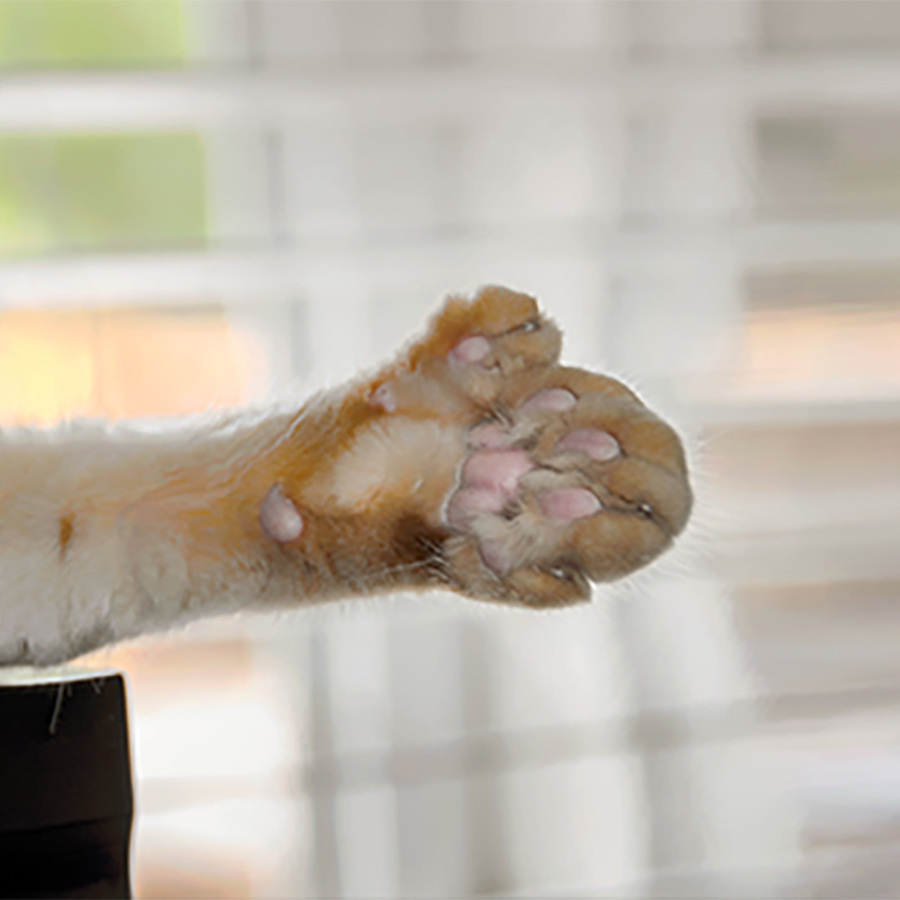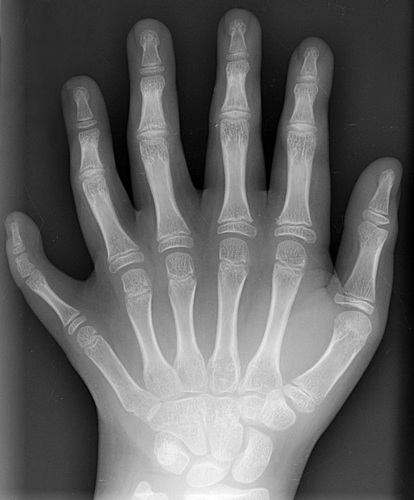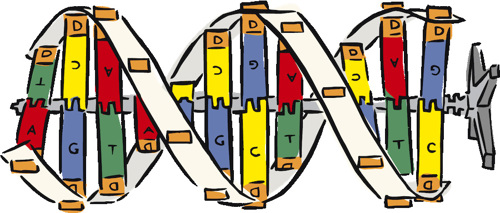
Is having 5 fingers a dominant trait?

- Related Topics:
- Autosomal dominant inheritance,
- Dominant and recessive,
- Developmental biology
A curious adult from Ohio asks:
“Is having 5 fingers a dominant trait?”
Most people have five fingers on each hand and five toes on each foot. In fact most animals around today only have five digits (fingers or toes) on their limbs.
But sometimes something goes wrong and an animal ends up with extra or missing digits. And surprisingly, having five fingers in these cases is usually a recessive trait.
When people or animals are born with extra fingers this typically dominant trait is called polydactyly. The same is true for the much more rare ectrodactyly, when people are born missing digits.

The exception is when extra or fewer fingers and toes are one part or a larger syndrome. Then polydactyly and ectrodactyly are recessive traits.
At first it may seem weird that a dominant trait is rare or a recessive trait is common but this actually happens all the time.
For example dwarfism is a dominant trait but uncommon in the population. And lactose intolerance is a recessive trait but common. (Click here to learn more about why dominant traits can be rare and recessive traits common.)
So maybe it isn’t too weird that a common trait can be recessive. But what makes polydactyly or ectrodactyly a dominant or recessive trait? Let’s do a quick review of what we mean when we say dominant or recessive.
31 Gene Flavors
Every person has two copies of almost every gene in their body. They get one copy from mom and one copy from dad.
As humans, we all share basically the same set of genes. What makes us different, though, is what version of those genes we have.
For example, we all have genes for eye color. But some people have a version of one of these genes for blue eyes and some a version for brown eyes. It is the different versions of the gene, not different genes, that determine what eye color you get.
If the version of the eye color gene you get from both mom and dad was the brown version, you end up with brown eyes. And if you get two “blue eye” versions, you have an eye color other than brown. (Click here for why I can’t say you’d have blue eyes!)
But what happens if the version from mom says “brown eyes” and the version from dad says “blue eyes?” Then you usually end up with brown eyes because the brown version of that gene is the dominant trait over the blue one. And the blue version is recessive.

Having more than five fingers is a little more complicated because it can be a dominant or recessive trait, depending on what genes are involved. If polydactyly is caused by just a single gene that only affects the number of fingers or toes and nothing else, then it is typically a dominant trait. If you have one “polydactyly” copy of any of these genes you get extra fingers even when the other copy says to make five fingers.
But polydactyly can also be one symptom of a larger syndrome. In these cases the syndrome (and the polydactyly that comes with it) is usually a recessive trait. Of course this means, in these cases, having five fingers is the dominant trait.
Ectrodactyly is similar. If only the number of fingers is affected it is dominant but as part of a larger syndrome it is recessive.
How can having five fingers sometimes be recessive and sometimes be dominant? Well remember when we say a trait is dominant or recessive that is always comparing it to another trait. And there can be more than two different traits.
Let’s add green to our eye color example to show you what I mean. Turns out green eyes are recessive to brown but are dominant over blue. So green eyes can be dominant or recessive depending on what we are comparing it to. Same thing with having extra, or too few, fingers or toes.
Many Genes, One Hand
There seem to be a lot of ways to end up with the wrong number of fingers. This makes sense when we think a little more about what a gene is, and how hard making a hand can be.
Genes are the instructions to do one specific task. To perform a more complicated job, like building a hand, many genes need to work together.
Think about the steps involved in making a hand. First you might have to determine what side of the hand will be the palm or back of hand. You also have to determine what side of the hand to put the thumb and what side the pinky. And finally, you also need to make distinct fingers from the remainder of the hand. (Not to mention all of the other steps I’ve left out!)

Individual genes are needed for each of these steps. In fact many genes are needed for most of these steps. Plus the genes involved in making sure you don’t make a hand where you are trying to make a foot. It adds up fast.
Changes to how any of these genes work could lead to extra fingers. And in most cases if you have just one altered copy of that gene you get extra fingers.
Caption: Each gene performs a very specific task. Something as complicated as making a hand requires lots of separate tasks and so lots of separate genes.
Dominant But Rare
So if there are many dominant versions of genes that make six fingers, why is having six fingers rare? Well, those versions of genes are rare. You don’t meet many people with extra fingers or toes.
This means when two people meet and have a baby, odds are neither has the “six-finger” copy of a gene. Since they both have the “five-finger” version, the baby will too.
This is the case for the vast majority of people.
In some regions polydactyly is more common though. Usually these are places where a founding member carried the gene for polydactyly and this person passed that on to their children. If there aren’t new people coming into the region the polydactyly trait is more common than in other regions.
House cats are a good example of this. Ernest Hemmingway owned a polydactyl cat, the descendants of which still live in the Hemmingway museum in Key West, Florida.
Since they are descendants from Hemmingway’s original cat and there are few new cats arriving in that region, almost half of the cats have extra toes.

How Did We Decide on Five Fingers?
Not all animals used to have five fingers. Around 375 million years ago, tetrapods (animals with four limbs) had as many as eight fingers per hand. But at some point five fingers became the typical number.
We don’t know exactly why five fingers took over but it’s clear that fairly early on some ancestor with five digits became the predominant model. Even animals like bats and whales with limbs that do not look like hands or feet still have five finger bones in their wings or flippers.
Even if we don’t clearly understand why we usually have just five fingers we’ve just learned that it isn’t always a dominant trait. Except in rare cases when it is.

Author: Alisa Lehman
When this answer was published in 2012, Alisa was a Ph.D. candidate in the Department of Biology, studying nitrogen fixation and symbiosis in Sharon Long's laboratory. Alisa wrote this answer while participating in the Stanford at The Tech program.
 Skip Navigation
Skip Navigation
